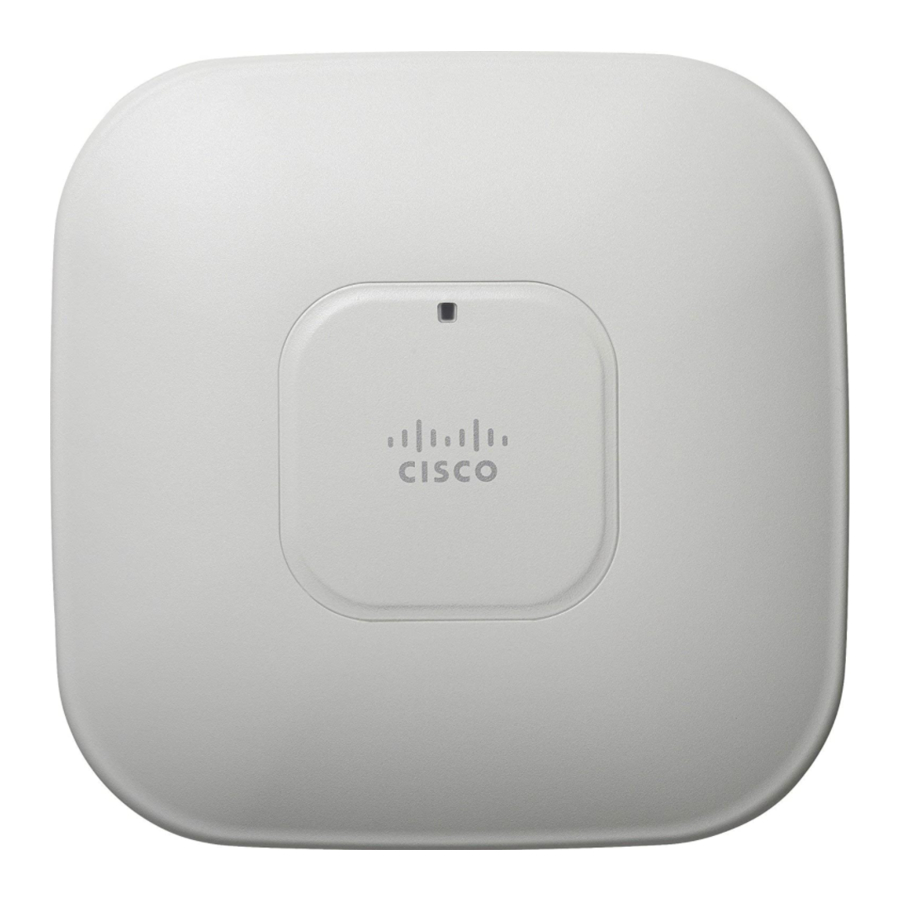Cisco AIR-LAP1141N-A-K9 - Aironet 1141 - Wireless Access Point Panduan Memulai - Halaman 12
Jelajahi secara online atau unduh pdf Panduan Memulai untuk Titik Akses Nirkabel Cisco AIR-LAP1141N-A-K9 - Aironet 1141 - Wireless Access Point. Cisco AIR-LAP1141N-A-K9 - Aironet 1141 - Wireless Access Point 35 halaman. Lightweight access point

6
Mounting the Access Point
Cisco Aironet 3500, 1260, 1140, 1130, and 1040 series access points can be mounted in several
configurations, including on a suspended ceiling, on a hard ceiling or wall, on an elecrtical or network
box, and above a suspended ceiling. Click this URL to browse to complete access point mounting
instructions:
http://www.cisco.com/en/US/docs/wireless/access_point/mounting/guide/apmount.html
The integrated antenna design of the 1140 series access point is designed for horizontal
Note
surfaces, (table top and ceiling installations). When mounted to such surfaces, the integrated
antennas produce the best antenna radiation pattern. For advanced features such as voice,
location, and rogue access point detection, ceiling mounting is strongly recommended.
However, for smaller areas such as conference rooms, kiosks, transportation, and hot-spot
usage where the customer is concerned primarily with data coverage and not advanced
features, you can mount the unit on a wall using wall anchors.
Do not use plastic wall anchors or the keyhole slots on the mounting bracket for ceiling
Caution
installations. When mounting the access point on a hard ceiling, use four fasteners
capable of maintaining a minimum pullout force of 20 lbs (9 kg).
7
Deploying the Access Point on the Wireless Network
After you have mounted the access point, follow these steps to deploy it on the wireless network.
Connect and power up the access point.
Step 1
Observe the access point LED.
Step 2
a. When you power up the access point, it begins a power-up sequence that you can verify by
observing the access point LED. If the power-up sequence is successful, the discovery and join
process begins. During this process, the LED blinks sequentially through its available colors
(red, amber, and green). When the access point has joined a controller, the LED is green if no
clients are associated or blue if one or more clients are associated.
b. If the LED is not on, the access point is most likely not receiving power.
12
